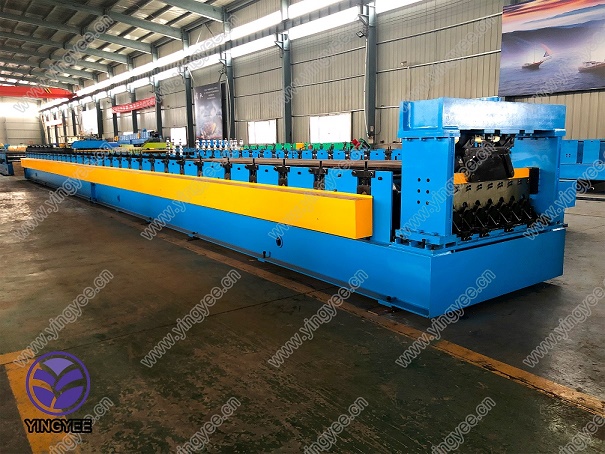
The Advancements in Roofing Sheet Forming Galvanized Steel Machines
In the world of construction and manufacturing, roofing materials are crucial components for ensuring structural integrity and longevity. Among various options, galvanized steel roofing sheets have gained prominence due to their durability, corrosion resistance, and aesthetic appeal. To meet the increasing demand for these materials, roofing sheet forming machines have evolved, enabling efficient production of high-quality galvanized steel roofing sheets. This article explores the advancements and significance of roofing sheet forming galvanized steel machines in modern construction.
Understanding Roofing Sheet Forming Machines
Roofing sheet forming machines are specialized equipment designed to convert flat galvanized steel coils into finished roofing sheets. The process generally involves several stages, including decoiling, roll forming, cutting, and stacking. These machines utilize advanced technology to ensure precision, speed, and efficiency in production.
The core functionality of the roofing sheet forming machine lies in its roll forming capability. Coils of galvanized steel are fed into the machine, where they are gradually shaped into desired profiles as they pass through a series of rollers. The role of these rollers is to mold the metal into specific configurations, such as corrugated or tile-like designs that enhance both functionality and aesthetic appeal.
Advantages of Galvanized Steel Roofing Sheets
Galvanized steel has become a preferred material for roofing applications due to its many advantages. The primary benefit is its resistance to rust and corrosion caused by environmental factors. The galvanization process coats the steel with a thin layer of zinc, providing a protective barrier that extends its lifespan significantly. As a result, buildings topped with galvanized steel roofing require less maintenance and replacement, ultimately reducing long-term costs.
Furthermore, galvanized steel roofing is lightweight yet strong, making it ideal for various architectural applications. It can withstand harsh weather conditions, including heavy rain, snow, and winds, thereby ensuring safety and protection for the structure underneath. The variety of profiles available also contributes to versatility in design, allowing architects and builders to create visually appealing roofs.

Technological Advancements in Machine Design
The roofing sheet forming galvanized steel machines have seen significant technological advancements in recent years. Manufacturers are now producing machines that are not only faster but also more energy-efficient. Automation is a key feature in modern machines, with many offering programmable settings that allow operators to customize dimensions and production speed based on specific project requirements.
Additionally, the integration of computer-controlled systems enhances precision in cutting and forming. These advances minimize material waste and ensure that each roofing sheet produced meets quality standards. Some machines are equipped with advanced sensors that detect irregularities in the steel, allowing for real-time adjustments to maintain consistent quality.
Environmental Considerations
With growing environmental concerns, the roofing industry is also shifting towards more sustainable practices. Modern roofing sheet forming machines are designed to optimize energy consumption. Many manufacturers are investing in eco-friendly technologies that reduce emissions during the production process. Furthermore, galvanized steel itself is recyclable, and using these machines helps promote sustainability within the construction sector.
Conclusion
The roofing sheet forming galvanized steel machine represents a critical advancement in the manufacturing of roofing materials. With its ability to produce high-quality, durable, and aesthetically pleasing roofing sheets efficiently, it plays a vital role in meeting the evolving demands of the construction industry. As technology continues to advance, these machines will likely incorporate even more innovative features, further enhancing their productivity and sustainability. The roofing industry, as a whole, stands to benefit from these developments, ensuring safer and more resilient structures for years to come.